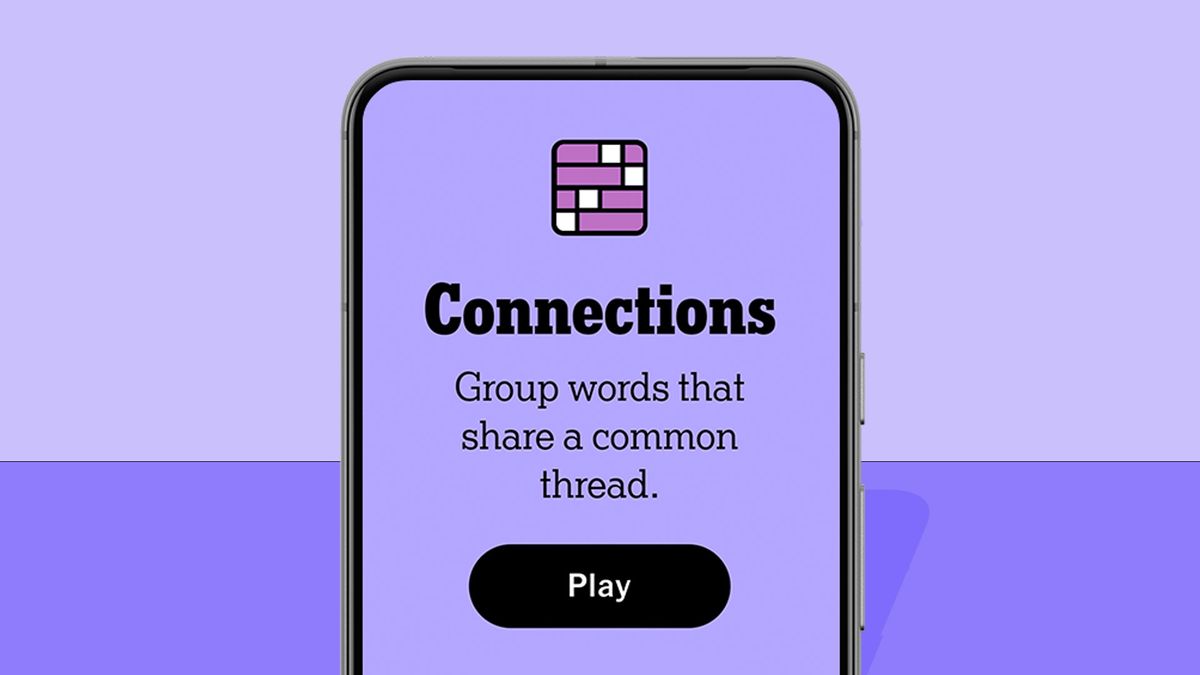Multiple Buying Options Available
If you buy something using links in our stories, we may earn a commission. This helps support our journalism. Learn more. Please also consider subscribing to WIRED
Buttery smooth performance. Sharp and bright displays. Fast charging and great battery life. Works on all major US carriers. Four Android OS upgrades, 6 years of security updates. Improved water resistance on OnePlus 13.
No Qi2 magnetic wireless charging. Cameras are OK on OnePlus 13R.
I've been using the OnePlus 13 and OnePlus 13R for the past month—through the 2024 holiday season and CES 2025—which means I've put them through some of the lightest and busiest workloads. There's not much to complain about on these new Android phones, which are adept at a little bit of everything. The premium OnePlus 13 has just about all the features you'd expect in a modern-day flagship smartphone.
The OnePlus 13 starts at $900 for the base 12 GB RAM and 256 GB storage version, undercutting competitors slightly, whereas the OnePlus 13R costs $600—it has lesser specs than its sibling and misses out on a few features. The updates to this generation are all about finesse. The software is smoother, the batteries last longer, the screens are brighter, and the phones are more water-resistant. If you're looking to switch phone brands and battery life is the number one priority on your list, these OnePlus phones are worth considering.
Seeing Double
OnePlus 13 (left) and OnePlus 13R (right)
The OnePlus 13 and 13R look identical but have some slight discrepancies in their dimensions—the flagship has a 6.82-inch screen whereas the cheaper phone has a 6.78-inch display. The most obvious difference between the pair is the Hasselblad branding on the OnePlus 13, plus the curvier edges around the display. The OnePlus 13R has flat edges, which I prefer as they are easier to grab.
There's a fun marble-like pattern on the OnePlus 13 and a brushed look on the 13R, but neither is as handsome as last year's OnePlus 12 and 12R—the emerald and ice blue were chef's kiss. There is a nice “Midnight Ocean” color this year for the OnePlus 13, which has a luxe-looking microfiber vegan leather material, but I didn't get a chance to try it.
OnePlus has finally upgraded the water resistance on its top-end device. Now, you get a combined IP68 and IP69 rating, meaning the OnePlus 13 can be submerged underwater for 30 minutes up to 1.5 meters and can handle heavy rain. That finally puts it on par with its peers. The display employs Ceramic Guard, which is OnePlus' take on Apple's Ceramic Glass, and it's purportedly stronger than Gorilla Glass Victus found on other phones. Glass is still glass, and you should use a screen protector—my iPhone 16 Plus screen cracked during testing.
Speaking of screens, the 120-Hz OLED displays are sharp, colorful, and smooth. The only difference other than size is sharpness, though by default the OnePlus 13 is set to a lower resolution to save battery life. Both look stunning, but my only gripe is that I had to manually adjust the brightness slider more often than on most other Android phones—these devices just kept lowering the brightness a little too much for me.
The OnePlus 13R settles for an IP65 rating, which is OK with rain but may not survive a dip in the pool. It also is among the first to use Corning's Gorilla Glass 7i, which is a budget to midrange offering from the glass maker, so don't expect the same level of durability, though it should be comparable if not slightly better than phones around this price. The rest of the hardware is all spot on, and the OnePlus Alert Slider makes me wish every phone had a sliding switch to transition from Mute, Vibrate, and Sound (ahem, Apple). I don't mind the egregiously large camera bump.
The OnePlus 13 is the first smartphone I've tested with Qualcomm's new Snapdragon 8 Elite processor—this chipset will power many high-end Android phones in 2025. So far, it's been excellent. Even when I'm heavily using the phone, it doesn't get unreasonably hot, doesn't stutter or lag, and doesn't unreasonably suck up battery life. With the OnePlus 13R, you're stuck with last year's Snapdragon 8 Gen 3 chipset with 12 GB of RAM. It's still no slouch.
OnePlus 13
Battery life is what's most impressive here. Both phones have a massive 6,000-mAh battery cell, which is big. Most smartphones of this size usually have a 5,000-mAh capacity—the Samsung Galaxy S24 Ultra is roughly similar in size to the OnePlus 13 yet has a 5,000-mAh cell. It's rare to see a smartphone cross that mark, and OnePlus says it achieved this with a new battery technology called Silicon NanoStack, which uses a 10 percent silicon-carbon composite anode to increase energy density. In fact, the OnePlus 13 is slightly thinner than the OnePlus 12, which has a 5,400-mAh battery. How about that?
With average use, these phones easily last two full days. With heavy use, I could go from morning to night without needing a top-up. At CES, I used the OnePlus 13R as a hotspot with my laptop and another phone to upload content without relying on convention Wi-Fi—despite continuous hours of tethering, the phone wasn't too warm, and I had around 25 percent left by 9 pm. They're not the second coming of smartphone battery technology, but they're a nice boost.
If you need a boost, the OnePlus 13 can recharge via its 80-watt charger in about 36 minutes, and the OnePlus 13R takes about 54 minutes with its 55-watt charger. The caveat is you have to use the included charging brick, which in this day and age is a little too chunky for my tastes—especially for a brick with just one USB-A port. So, I decided not to pack it for CES and suffered from relatively mundane charging speeds. It's a nice perk, but I wish OnePlus could shrink the adapter's size. (At least OnePlus includes a charger, which is more than I can say over any other phone brand.)
Arguably most disappointing is the wireless charging situation. Yes, only the OnePlus 13 supports wireless charging, but it doesn't support the latest Qi2 standard. This would have enabled a MagSafe-like charging system, with magnets embedded into the phone so you can hook it up with various magnetic accessories. OnePlus has skipped this technology and decided to sell a magnetic case instead—this isn't new, other case companies offer magnetic cases for Pixel and Samsung phones, but it would have been nice to have this functionality baked in.
Cameras
If you enjoy taking photos and you're split between the OnePlus 13 and OnePlus 13R, the answer is easy: get the OnePlus 13. It has a versatile triple-lens system with a 50-MP primary camera, 50-MP 3X optical zoom telephoto, and a 50-MP ultrawide. (The OnePlus 13R has three cameras too, but after the 50-MP primary, it only has a 50-MP 2X optical telephoto and an 8-megapixel ultrawide.)



Photograph: Julian Chokkattu
OnePlus 13 3X Optical camera
Without going into enormous detail, I liked my results with the OnePlus 13 more often than the OnePlus 13R. The latter didn't deliver the right amount of detail or sharpness, and didn't freeze-frame the action as reliably as the OnePlus 13. It also tended to perform worse in low light.
OnePlus 13 also has that Hasselblad tie-in, which means you get a few extras like a Master mode to customize all the camera settings, but more importantly, a handful of Hasselblad-tuned filters to get the right look for your shot. I like using these filters a lot—very much like Apple's Photographic Styles on the iPhone. The results are almost always better than applying a filter post-capture too (there's more at play here than just slapping a filter over the image).
These features are fun, and while the overall camera quality is great on the OnePlus 13, it still can lag behind the likes of Apple, Samsung, and Google, especially in the video department. Also, I ran into a few autofocus issues where the telephoto camera struggled to focus. There's also the occasional white balance and skin tone issue, not to mention the over-brightening of dark scenes to squash all shadows.
OnePlus AI
Last year, I praised the OnePlus 12 for barely having “AI” features. Well, OnePlus has jumped on the bandwagon—there's a smattering of artificial intelligence features on the OnePlus 13 series.
OnePlus 13's Smart Features (top) vs OnePlus 13R's AI Software (bottom)
Much of this is useless. Pull out a panel on a PDF or browser tab and you can trigger an AI Summary of the page, or have it read the text out loud. This implementation isn't as hidden as on other devices, but the summarization is slow and you have to read it as it's generated line by line. At that point, I may as well just read the story.
Over in the OnePlus Photos app, you now have a suite of AI editing features. AI Eraser can remove unwanted objects, a fairly standard capability at this point, but there are some unique ones like AI Reflection Eraser. I used this to get rid of the glare on a photo I took from my hotel room at CES, and it did a respectable job. I could see it being helpful. It's a shame these features only work with an internet connection.
Original.
AI Reflection Eraser.
More interesting to me is the fact that OnePlus has effectively mimicked Apple's Dynamic Island feature. (I don't mind because I've come to quite like Dynamic Island.) Now when you trigger live actions, the area around the selfie camera expands to show these “Live Alerts,” ready for quick access with just a tap. For example, start a timer and go to the home screen, and now you can quickly view the timer from this Live Alert window by the selfie camera, and tapping on it will take you back to the app. The downside is that barely any third-party apps support this feature—Spotify works, but YouTube Music doesn't.
The same can be said of a new OnePlus feature called BeaconLink, which supposedly turns the phone into a Walkie-Talkie of sorts so you can chat with someone via Bluetooth if they're within a 200-meter range when there's no cellular connectivity or Wi-Fi. Well, turns out, this feature only works with other OnePlus phone owners. Not very helpful, is it?
Overall, I'm quite happy with the OnePlus 13 series. The company has even zhuzhed up its software update policy to four Android operating system upgrades and six years of security updates. Still not as much as Samsung and Google, but plenty. Unlike in 2024, I'm a little more enamored with the flagship—the OnePlus 13R is $100 more than its predecessor and there are many other great phones around that price, like the Google Pixel 8A. But competition at the high end of the Android market is slim (at least in the US), and it's nice to see OnePlus continuing to stick to its roots by offering everything you need at a slightly lower price.

 4 days ago
3
4 days ago
3
/cdn.vox-cdn.com/uploads/chorus_asset/file/25336775/STK051_TIKTOKBAN_CVirginia_D.jpg)
/cdn.vox-cdn.com/uploads/chorus_asset/file/25829979/STK051_TIKTOKBAN_B_CVirginia_D.jpg)






 English (US) ·
English (US) ·